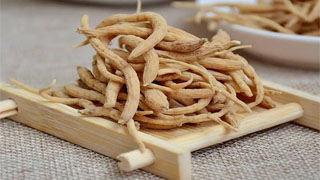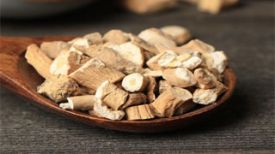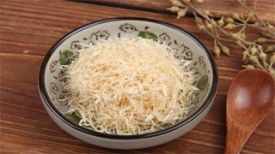
1. Alias
Four leaf ginseng, child ginseng, child ginseng, rice ginseng.2. Plant morphology
Perennial herb, 15-20 cm tall. The root is slender and spindle shaped, with a pale yellow white outer skin and sparse fibrous roots. The stem is upright with 2 rows of short hairs. Leaves are opposite, with the lower leaves being spoon shaped or lanceolate, and the base gradually narrowing; Upper leaves ovate lanceolate or long ovate; The stem top leaves are relatively large, often arranged in a "cross" shape with four leaves. Flower type 2, axillary, with large white flowers at the top of the stem, with short hairs on the flower stem, 5 sepals, lanceolate, 5 petals, 2 toothed tips, 10 stamens, and 3 styles; The flowers at the lower part of the stem are small, purple, with 4 sepals, closed, without petals, and usually have 2 stamens. The capsule is oval in shape, the seeds are flattened or elongated kidney shaped, brown, and have wart spots. The flowering period is from April to May, and the fruiting period is from May to June.
3. Origin distribution
Born in fertile shady wetlands under the forest or in crevices on damp mountain slopes, it is cultivated. Distributed in Hebei, Henan, Shandong, Shanxi, Shaanxi and other places.
4. Harvesting and processing
When most of the stems and leaves wither in summer, they should be dug, washed, and the roots removed. They should be placed in boiling water and slightly scalded before being dried or directly dried.
5. Characteristics of medicinal herbs
Slender spindle shaped or elongated strip, slightly curved, 3-10 cm long, 0.2-0.6 cm in diameter. The surface is yellow white, relatively smooth, with slight longitudinal wrinkles and root scars in the depressions. There are stem marks at the top. Hard and brittle in texture, with a flat cross-section, pale yellow white in color, and a keratinous appearance (dried after scalding); Or off white, with a powdery texture (for those exposed to sunlight). The air is faint and the taste is slightly sweet.
6. Sexual Taste Returning to the Classics
Flat in nature, with a sweet and slightly bitter taste. Returning to the Spleen Meridian and Lung Meridian.
7. Effect and Function
Nourish qi and spleen, generate fluids and moisten the lungs. It belongs to the subcategory of Qi tonifying drugs under the category of deficiency tonifying drugs.
8. Clinical application
Dosage: 9-30 grams, decoct in water and take orally. Used to treat spleen deficiency, fatigue, loss of appetite, post illness weakness, insufficient qi and yin, spontaneous sweating, thirst, and dry cough in the lungs.
9. Chemical composition
Containing cyclic peptides, such as Panax ginseng cyclic peptides A, B, C, and Pseudocrenilabrin cyclic peptides, as well as volatile oils, 12 of which have been identified, mainly including furfuryl alcohol. It also contains various free amino acids, with arginine, glutamic acid, and aspartic acid having the highest content, accounting for 30% to 40% of free amino acids, as well as maltose and other substances. In recent years, glyceryl palmitate, palmitic acid, β - sitosterol, △ 7-sitosterol-3-8-D-glucopyranoside, inositol-3-methyl ether, α - sophorose and sucrose, and kaempferol have been isolated from it.
10. Usage taboos
Those with dry and hot organs, yin deficiency, and insufficient body fluids should take it with caution.
11. Compatibility prescription
① Treating cough caused by lung deficiency: 15g of Radix Ginseng, 12g of Ophiopogon japonicus, and 6g of Licorice. Boil it in water. (Hubei Journal of Chinese Herbal Medicine)
② After treating the deficiency of qi and blood: 15 grams of ginseng, 12 grams of astragalus, 3 grams of schisandra, 4 grams of tender white beans, and 4 jujubes. Boiling water as a substitute for tea. (Anhui Chinese Herbal Medicine)
③ Weakness and dry mouth after treatment: 9 grams each of Taizishen, Shengdihuang, Baishao, and Shengyuzhu. Boil it in water. (Zhejiang Medicinal Plant Chronicles)
④ Treatment for palpitations: 9g of Taizi ginseng, 9g of Nansha ginseng, 9g of Danshen, and 9g of Sophora flavescens. Boil in water and take one dose each. [Liaoning Journal of Traditional Chinese Medicine, 1984, (1): 25]
⑤ Treatment for neurasthenia: 15g of Radix Ginseng, 9g of Angelica sinensis, Ziziphus jujuba seeds, Ziziphus asiatica, and roasted licorice. Fry and serve. (Anhui Chinese Herbal Medicine)
⊙ The content of the article is for clinical reference only. Non TCM professionals are not allowed to test drugs.


